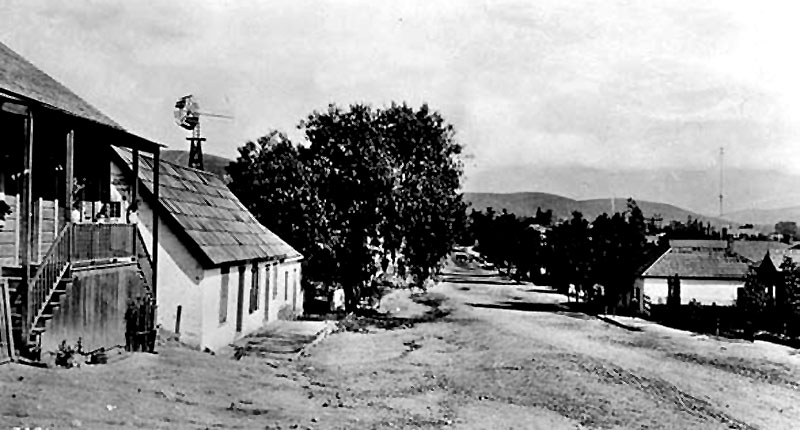I’ve had this image for several weeks, found in one of my swims through the LA Public Library’s digital archives, but I’ve refrained from posting it because the information packaged with the image is sparse. It lists this is street scene as Sunset and Castelar in 1890, but I’d never heard and could find on no current map this mystery thoroughfare.
Until my copy of the awesome and anticipated Los Angeles in Maps arrived this week and it wasn’t long before I found cartographical proof as to the street’s location, which is basically now Hill Street.
So if my guess is correct that the photographer is standing in the middle of the intersection of what was then Castelar and now Hill, then what you’re looking at is eastward along Sunset Boulevard toward the plaza.
And just in time for Halloween, what you’re not seeing behind you to the right beginning with the southwest corner of the intersection is what had been the old Fort Hill Cemetery, a graveyard of Los Angeles pioneers. Thanks to unscrupulous city officials who subdivided the 10-acres into residential lots in 1884 and subsequent unethical developers who built upon it without relocating many of the remains, there very well still might be bodies buried beneath what’s now the new high school and — typically — a parking lot that stands upon the property now.
From the Southern California Genealogy Society (SCGS) website:
In 1884, the city sold twenty-four residential lots on land previously part of the city cemetery complex. Several years later, Major Horace Bell, in his study on the land boom of the 1880s, decried the sale: “…A recital of the various forms of rascality perpetrated by the boomers would fill a volume. But the one greatest piece of rascality of all, to my mind, was the desecration of one of the city graveyards. It was a small pioneer graveyard covering ten acres. Some of the most honored California pioneers and officers of the army were interred there, but it was no longer used for burials. The city allowed promoters to map it, cut it up and sell it off in small building lots. In building streets through it, human remains were excavated and scattered and to-day [about 1900] wagons rattle through streets built up over buried human bodies. Houses stand on graves. The city of Los Angeles sold…this cemetery plot, a municipal burying ground, without pretending to remove and re-inter elsewhere the bodies resting there.â€
The SCGS concludes that the cemetery’s final chapter was written in 1947 with the last remains finally removed perhaps in preparation for the 101 Freeway that would soon be built along the south side of the space. But (queue the spooky music) are we so sure they got every body out…? Mwaaaaaahahahahaha.

 Follow
Follow